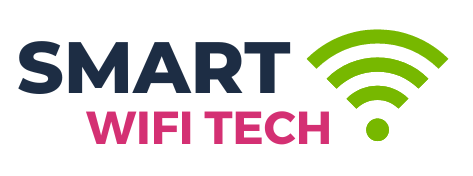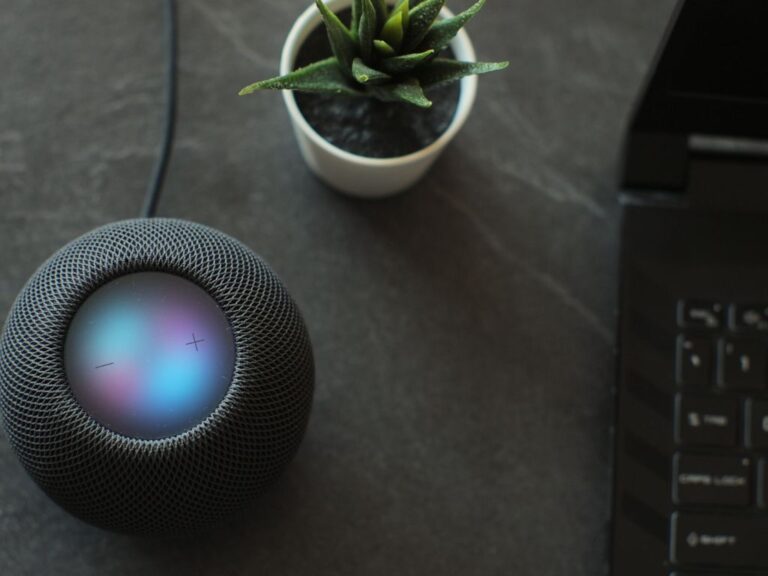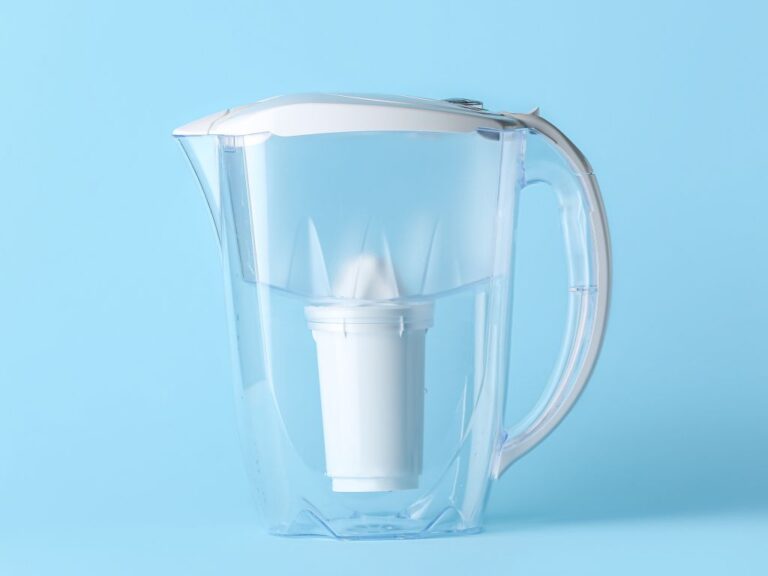The Role of Artificial Intelligence in Smart Kettles: Enhancing User Experience and Efficiency

The humble kettle has undergone a remarkable transformation in the ever-evolving landscape of smart home technology. Once a simple device for boiling water, it has now been infused with the power of artificial intelligence (AI), ushering in a new era of convenience, efficiency and innovation. Smart kettles with AI capabilities are redefining the traditional tea or coffee-making experience, giving users an unprecedented level of control and customisation. This article looks at the role of AI in smart kettles, exploring how it is improving user experience and efficiency, and revolutionising our daily routines at the heart of the kitchen. As we embark on this journey through the intersection of technology and tea, we uncover the fascinating ways in which AI is reshaping our relationship with this essential kitchen appliance.
Understanding Smart Kettles
Smart kettles are a significant step up from their traditional counterparts, integrating technology to offer users enhanced functionality and convenience. At their core, smart kettles retain the primary function of boiling water, but are equipped with additional features that enhance the user experience.
The evolution of kettles into smart devices has been driven by the increasing demand for connected and automated appliances in modern households. Initially, kettles were manually operated appliances that required the user to monitor the boiling process and manually switch off the appliance when the water reached the desired temperature. However, as technology has advanced, kettles have undergone a remarkable transformation.
Modern smart kettles are characterised by their connectivity to other devices, allowing users to control them remotely via smartphone apps or voice assistants. This connectivity allows users to start the boiling process from anywhere in the house, providing unparalleled convenience and flexibility.
In addition to connectivity, smart kettles are equipped with a range of sensors that monitor various parameters such as water level, temperature and brewing time. These sensors provide precise control over the brewing process, optimising energy efficiency and ensuring consistent results.
Another key feature that distinguishes smart kettles from their traditional counterparts is the integration of AI. AI algorithms analyse user preferences, usage patterns and environmental factors to personalise the brewing experience. For example, AI can learn the preferred temperature and brewing time for different types of beverages, such as tea or coffee, and adjust the settings accordingly.
Enhanced User Experience
How AI Enhances the User Experience with Smart Kettles
Artificial Intelligence (AI) is at the heart of the smart kettle user experience, enhancing convenience, efficiency and personalisation in a number of ways:
Predictive brewing – AI algorithms analyse user habits and patterns to predict when hot water is needed. By learning from past usage data, smart kettles can anticipate user preferences and automatically start heating water at the optimal time, ensuring hot water is ready when it’s needed.
Personalised settings – AI enables smart kettles to learn and adapt to individual user preferences over time. By analysing data such as brewing times, temperatures and beverage choices, AI can adjust the kettle’s settings to precisely match the user’s preferences, providing a personalised brewing experience.
Optimised efficiency – AI algorithms optimise energy use and efficiency by monitoring factors such as water temperature, usage patterns and environmental conditions. This ensures the kettle operates efficiently, minimising energy consumption and waiting times for boiling water.
Safety enhancements – AI integration enhances the safety features of smart kettles by continuously monitoring the kettle’s operation and environment. AI algorithms can detect potential hazards or malfunctions and take pre-emptive action, such as automatically shutting off the kettle, to prevent accidents and ensure user safety.
Voice Control Capabilities through Virtual Assistants
Voice control capabilities through virtual assistants such as Alexa or Google Assistant provide users with hands-free operation and seamless integration into the smart home ecosystem:
Hands-free operation – Users can control their smart kettles using simple voice commands, eliminating the need for manual interaction with buttons or switches. By activating the virtual assistant and issuing commands such as “Alexa, boil water” or “Hey Google, start the kettle”, users can effortlessly initiate the boiling process.
Convenience and accessibility – Voice control brings a new level of convenience and accessibility to the brewing experience, especially for users with mobility impairments or disabilities. Instead of physically interacting with the kettle, users can simply speak commands to perform tasks such as boiling water or adjusting temperature settings.
Integration with the smart home ecosystem – Virtual assistants such as Alexa and Google Assistant are integral parts of the broader smart home ecosystem, allowing users to control multiple connected devices with a single voice command. Smart kettles can be seamlessly integrated into existing smart home setups, allowing users to create routines, set schedules or automate tasks that involve the kettle along with other compatible devices.
Convenience of Remote Operation via Smartphone Apps
Remote control via smartphone apps offers unparalleled convenience for smart kettle users:
Control anytime, anywhere – Smartphone apps allow users to control their smart kettle remotely, regardless of their location. Whether at home, at work or on the go, users can initiate the boiling process, adjust temperature settings and monitor the kettle’s status in real time using their smartphone.
Flexibility and freedom – Remote control via smartphone apps gives users the flexibility to manage their kettle according to their schedule and preferences. Users can start the kettle in bed, on the way home from work or even while running errands, ensuring that hot water is ready when they need it.
Customisation options – Smartphone apps offer customisation options for temperature settings, brew times and personal preferences. Users can save their preferred settings for different types of beverages, create personalised profiles and adjust settings to suit their specific tastes and brewing preferences.

Efficiency Improvements
Energy-Saving Benefits of AI-Controlled Smart Kettles
Precise temperature control – AI-powered smart kettles can accurately maintain the desired temperature for extended periods of time without wasting energy. Traditional kettles often continue to heat water beyond the required temperature, wasting energy, whereas AI algorithms ensure the kettle only uses energy when necessary.
Predictive brewing – AI algorithms analyse usage patterns and predict when hot water will be needed based on historical data. By preheating water at optimal times, smart kettles can minimise energy consumption while ensuring hot water is available when needed, reducing the need for repeated heating cycles.
Energy efficient features – Many AI-controlled smart kettles come with energy-saving features such as automatic shut-off and boil dry protection. These features help prevent energy waste by ensuring that the kettle automatically switches off when the water has reached the desired temperature or when there is no more water to heat.
Optimised heating times – AI algorithms can optimise heat-up times based on usage patterns and user habits, ensuring the kettle works efficiently while minimising energy consumption. By analysing data such as time of day, frequency of use and desired temperature settings, smart kettles can adjust heating times to match user preferences and reduce unnecessary energy use.
Optimisation of Heating Times Based on Usage Patterns and User Habits
Learning from usage data – AI algorithms analyse historical usage data to identify patterns and trends in users’ boiling habits. By understanding when and how often the kettle is used, as well as desired temperature settings, smart kettles can optimise heating times to match the user’s preferences and habits.
Predictive brewing – AI-powered smart kettles can predict when hot water is needed based on usage patterns and preheat water accordingly. By anticipating user needs and pre-heating water at optimal times, smart kettles can minimise heat-up times while ensuring hot water is available when needed.
Adaptive algorithms – AI algorithms continuously learn and adapt to changes in usage patterns and user habits over time. By analysing new data and adjusting heating times accordingly, smart kettles can optimise energy use and ensure that the kettle operates efficiently while meeting the user’s needs.
Adjusting Water Temperature for Different Types of Beverages
Customised temperature settings – AI-controlled smart kettles offer customisable temperature settings for different types of beverages, such as tea, coffee or hot chocolate. By adjusting the water temperature to the specific requirements of each beverage, smart kettles can ensure optimal flavour and aroma extraction, enhancing the overall drinking experience.
Precise temperature control – AI algorithms monitor and precisely adjust the water temperature to achieve the desired flavour profile for each beverage. Whether brewing delicate green tea or robust coffee, smart kettles can maintain the ideal temperature range to maximise flavour extraction without overheating or scalding the beverage.
Personalised preferences – Smart kettles can learn and adapt to user preferences over time, adjusting water temperature settings based on previous selections and feedback. By tailoring the brewing experience to the user’s taste preferences, smart kettles can ensure consistent results and increase user satisfaction.
Reduction in Water Wastage through Precise Measurement and Control
Optimised water usage – AI-controlled smart kettles accurately measure the amount of water needed for each brewing session, minimising water wastage. Unlike traditional kettles, which often need to be overfilled to ensure adequate coverage of the heating element, smart kettles can accurately measure and heat only the required amount of water, reducing unnecessary waste.
Boil-dry protection – Smart kettles are equipped with AI algorithms that detect when the water level is too low and automatically turn off the heating element to prevent boiling dry. This feature not only increases safety, but also minimises water waste by preventing the kettle from heating empty or insufficiently filled jugs.
Water saving – By optimising heating times and temperature settings, smart kettles can reduce the need for multiple boiling cycles, saving water and energy resources. In addition, AI algorithms can identify and minimise water waste by detecting leaks or other inefficiencies in the kettle’s operation, ensuring that every drop of water is used efficiently.
Safety and Security
Addressing concerns about safety features in smart kettles:
Automatic shut-off mechanisms – Smart kettles are equipped with an auto shut-off mechanism that turns off the heating element when the water reaches the desired temperature or if the kettle detects an abnormal condition. This feature prevents overheating and reduces the risk of accidents such as fire or damage to the kettle.
Boil-dry protection – Another essential safety feature on smart kettles, boil-dry protection automatically shuts off the heating element when the water level drops below a certain threshold. This prevents the kettle from heating empty or insufficiently filled jugs, minimising the risk of damage to the kettle and ensuring user safety.
The role of AI in identifying potential hazards and preventing accidents:
Continuous monitoring – AI algorithms continuously monitor the operation of smart kettles, analysing data from sensors and other sources to detect potential hazards or abnormal conditions. This proactive approach enables AI to identify issues such as overheating, low water levels or malfunctions before they escalate into safety hazards.
Predictive analytics – AI can also use predictive analytics to anticipate potential hazards based on historical data and user behaviour patterns. By analysing past incidents and trends, AI can identify potential risks and take pre-emptive action to prevent accidents, such as automatically adjusting temperature settings or alerting users to potential safety concerns.
Adaptive responses – AI-powered smart kettles can adapt their behaviour in response to changing conditions or user preferences to mitigate potential hazards. For example, if the kettle detects a sudden rise in temperature or abnormal operating conditions, AI algorithms can adjust the heating element or activate safety protocols to prevent accidents.
Outlines cybersecurity measures implemented to protect user data and device integrity:
Encryption – Smart kettles use encryption protocols to secure communications between the device and external networks, such as Wi-Fi or Bluetooth connections. This encryption ensures that sensitive data, such as user credentials or personal information, is protected from unauthorised access or eavesdropping.
Authentication – Smart kettles implement robust authentication mechanisms to verify the identity of users and devices accessing the kettle remotely. Multi-factor authentication, biometric authentication or unique device identifiers help prevent unauthorised access and protect user data.
Firmware updates – Manufacturers regularly release firmware updates to address security vulnerabilities and enhance device security. Smart kettles support over-the-air updates, allowing users to easily install the latest security patches and firmware upgrades to protect against emerging threats.
Privacy policies – Manufacturers adhere to strict privacy policies and data protection regulations to protect user data and ensure transparency in data collection and processing practices. Users have control over their data and can adjust privacy settings or opt out of data collection features if desired.
The future of smart kettle technology promises to be both innovative and transformative, driven by advances in artificial intelligence (AI) and seamless integration with other smart home devices. With AI algorithms at the helm, smart kettles will revolutionise the way we prepare hot beverages, offering unparalleled convenience, efficiency and personalisation.
Through predictive brewing, smart kettles will anticipate user needs and optimise heating times, ensuring hot water is always available when it’s needed. Enhanced safety features, such as automatic shut-off and boil dry protection, will provide peace of mind while minimising energy consumption and reducing the risk of accidents.
Seamless integration with virtual assistants such as Alexa and Google Assistant will enable hands-free operation and voice control, while integration with other smart home devices will create a truly connected and automated kitchen ecosystem. Users will have the flexibility to control their smart kettles remotely via smartphone apps, adjust temperature settings and receive personalised recommendations based on their preferences.
What’s more, machine learning algorithms will continually adapt to users’ habits and preferences over time, providing tailored recommendations and optimising the brewing process for individual tastes. Whether it’s brewing the perfect cup of tea, coffee or any other hot beverage, smart kettles with AI technology will take the brewing experience to new heights.






